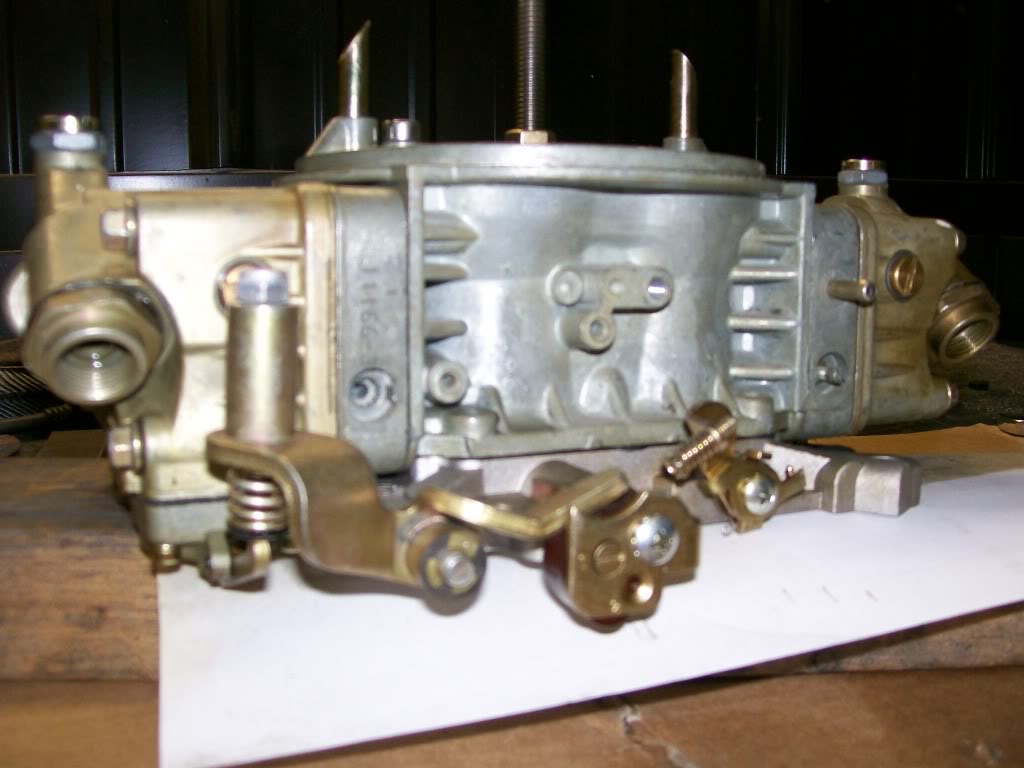You must be logged in to rate content!
6 minute(s) of a 620 minute read
3-3-2012
Hi Scooter402, This is a somewhat older one. I'm gonna date myseilf here, I bought it new back around 1978.

This aftenoon I'm gonna replace the power valve in my newer carb. I'm gonna get some pictures of the accelerator pump on it for a comparison of the stock one vs the 50cc unit. Mainly to show one more choice in dialing in a Holley carb.
Without getting too far ahead of this teaching. I notice you mentioned the steel ball in the picture. Are you refering to the alternative check valve that Holley used that was a rubber design? or are you refering to the steel ball they use just before the squirter?
And yes, there will be a study on the squirters coming up soon also.
I do appreciate any comments along this teaching, I may assume everyone knows about certain parts but may not. If you're anything like me, if I get stopped by not know how something works, I'm a mess the rest of the way.
If someone doesn't want to publically write something, I do answer PM's also.
I'm still on the accelerator pump learning and we're gonna be here for a couple more posts.
Today I want to tap into the idea of figuring how something works and not just to change the part.
If I spell this right, I'm talking about being a diagnostition, vs being a partschanger.
Had I wanted everyone to be a parts changer, I'd have shown a parts illustration and not tried to break down the what fors and whys.
I get the feeling I have a group who desires to be diagnostitions, people who understand not only where the part goes, but why it is there and perhaps why it was made the way it is instead of a different way.
Ok, that's where I'm heading with this next post. I'm gonna show yet another choice that Holley has in the way of adjusting the system to fit your needs.
I've shown a standard sized fuel pump diaphram earlier. This next picture has the standard size and a 50cc high volume replacement.

I worked on my high performance carb today. While I had it off I figured I'd take a couple pics for comparison, and learning.
Along with the much larger rubber diaphram, in the kit you get a larger canister, spring, and the pivoting linkage that rides on the plastic cam on the throttle shaft.

Obviously there is quite a difference, that 50cc one is gonna push alot of fuel. Now considering the fact that gas in the carb is a liguid, and liguid is not compressable.
Anyone know where I'm heading yet?
Imagine, we sit with the engine running at the start line at a drag race, the tree flashes down to green. Once it turns green, our foot is gonna go to the floor. All the fuel that goes into the engine is gonna be drawn by vacuum except the shot of fuel by the accelerator pump.
The outlets that the fuels comes out of are only 30 to 40 thousands of an inch in diameter. Now especially with the high volume rubber diaphram, were gonna try to force fuel to the outlets faster than the fuel can get through the outlets.
We have to have a way to absorb the force going from the cam to the rubber diaphram or we could burst the diaphram.
I have to figure the rubber diaphram will expand under pressure, but at what point would it burst. There is another item that absorbs some of this sudden pressure.
Any idea how some of the action is absorbed, and then dispersed within a couple seconds later?
It is looking at the parts and figuring why, that I enjoy mechanics. My hat goes off to the many engineers that figure this stuff from scratch.
Ok, I get the impression carbs are the focus at the moment.
Scooter402 brought up a good point. The steel ball check valve I pictured is old school, although I'm not sure what year the went to a rubber check valve.
The rubber one basically snaps into place. It has just enough give and flex that when the accelerator pump is pushed back into place by the spring, the negative pressure pulls fuel past this rubber valve.
A picture of it.

This picture really focused good. Now we're inside the float bowl. Look closely, we'll cover the insides later but for now we can see the red rubber valve sticking up. In the same picture I put an arrow showing a hole. This is where the accelerator pump fuel passes through on it's way to the main center section of the carb.


Ultimate classic truck right there
Posted by CCmyVW on 12/26/20 @ 4:17:42 PM